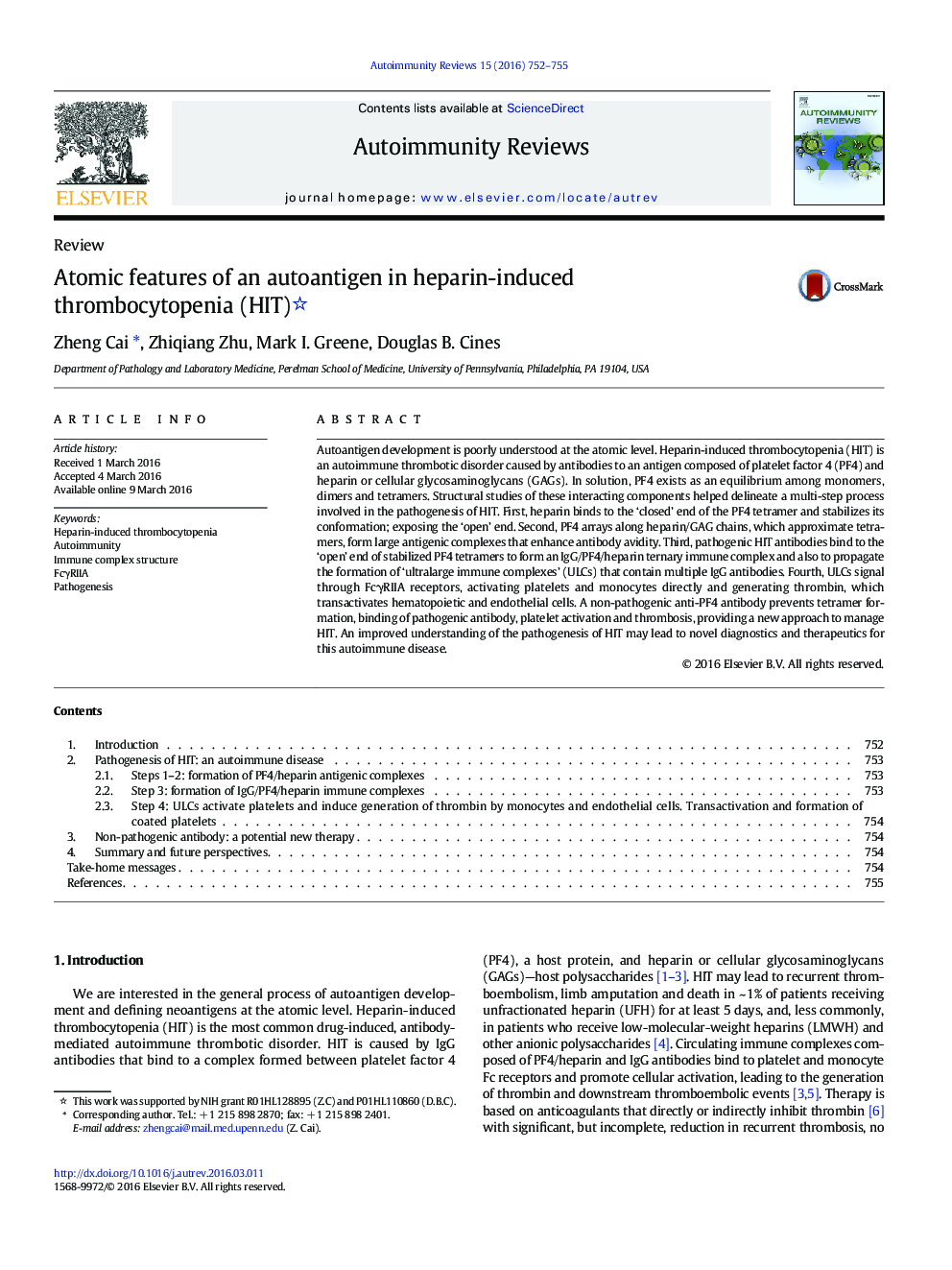| کد مقاله | کد نشریه | سال انتشار | مقاله انگلیسی | نسخه تمام متن |
|---|---|---|---|---|
| 3341354 | 1214201 | 2016 | 4 صفحه PDF | دانلود رایگان |
Autoantigen development is poorly understood at the atomic level. Heparin-induced thrombocytopenia (HIT) is an autoimmune thrombotic disorder caused by antibodies to an antigen composed of platelet factor 4 (PF4) and heparin or cellular glycosaminoglycans (GAGs). In solution, PF4 exists as an equilibrium among monomers, dimers and tetramers. Structural studies of these interacting components helped delineate a multi-step process involved in the pathogenesis of HIT. First, heparin binds to the ‘closed’ end of the PF4 tetramer and stabilizes its conformation; exposing the ‘open’ end. Second, PF4 arrays along heparin/GAG chains, which approximate tetramers, form large antigenic complexes that enhance antibody avidity. Third, pathogenic HIT antibodies bind to the ‘open’ end of stabilized PF4 tetramers to form an IgG/PF4/heparin ternary immune complex and also to propagate the formation of ‘ultralarge immune complexes’ (ULCs) that contain multiple IgG antibodies. Fourth, ULCs signal through FcγRIIA receptors, activating platelets and monocytes directly and generating thrombin, which transactivates hematopoietic and endothelial cells. A non-pathogenic anti-PF4 antibody prevents tetramer formation, binding of pathogenic antibody, platelet activation and thrombosis, providing a new approach to manage HIT. An improved understanding of the pathogenesis of HIT may lead to novel diagnostics and therapeutics for this autoimmune disease.
Journal: Autoimmunity Reviews - Volume 15, Issue 7, July 2016, Pages 752–755
